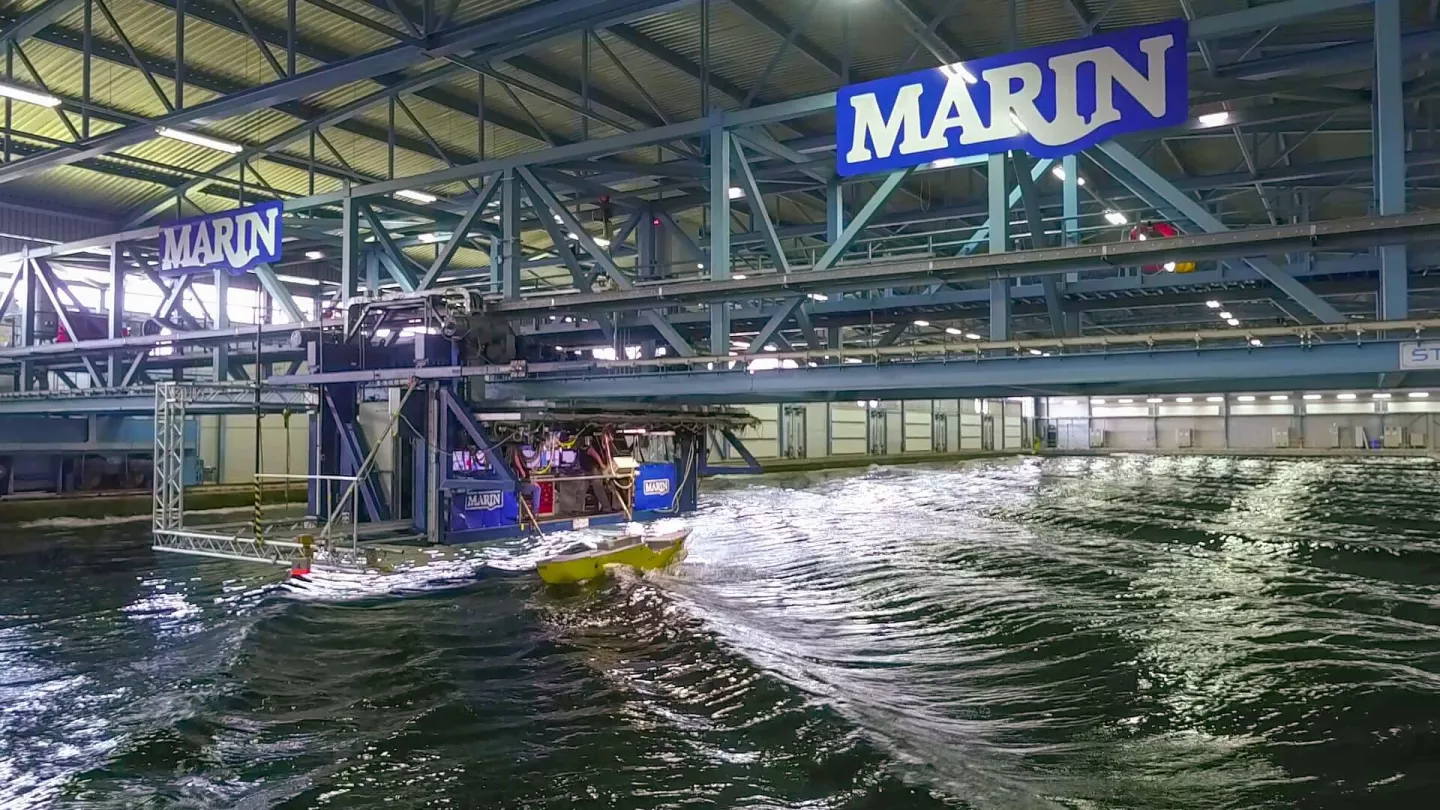Marin: A leading global research institute for ship testing
Marin is the world's third-largest ship research institute, following counterparts in Russia and the United States. Its 400 engineers and technicians work tirelessly to make ships and maritime vessels safer, greener, and smarter. Shipbuilders, ship owners, and design engineers rely on Marin's services to optimize their vessels.
Using miniature ship models up to six meters long, Marin tests their seaworthiness under real-life conditions. These tests take place in six specialized pools capable of simulating various maritime environments, including high seas, shallow waters, and coastal regions.
"We can create wind and waves to observe how the models behave," explains project manager Jocco Dekker. Marin (Maritime Research Institute Netherlands) also operates test facilities for propellers and engines, alongside simulators where ship masters can train for real-world scenarios.

Accelerometers uncover design flaws and optimize ship performance
The data gathered in Marin's test pools highlights potential design flaws that could impact ship safety and efficiency. For instance, fuel consumption can be directly influenced by hull shape and longitudinal position in the water.
Using the sensor's data, Marin develops advanced computer simulations and provides design recommendations that enhance ship performance and competitiveness.

Why accuracy matters
Accurate measurements are essential for meaningful simulations. Marin uses capacitive accelerometers, which deliver exceptional precision and adaptability. ASC develops customized sensors tailored to meet customer-specific requirements, including:
- Calibration and measurement range adjustment;
- Cable length customization;
- Special connector installation.
"The flexibility these capacative accelerometers provide is ideal for our needs. We precisely determined the movement of the floating tunnel"

Enable underwater and offshore testing
Marin uses two primary types of triaxial accelerometers for their ship model tests:
- The ASC OS-315LN (Low Noise) sensors are used in offshore pool tests, where accurate low-frequency measurements are required. The OS-315LN sensors ensure precise detection of low-frequency vibrations, which is critical when testing ship behavior in calm waters.;
- In the high-seas simulation pools, ASC 5521MF (Medium Frequency) accelerometers measure ship model acceleration across a broad frequency spectrum. The 5521MF sensors handle higher-frequency vibrations up to 800 Hz, making them ideal for dynamic, high-sea conditions.

ASC OS-315LN-PG Capacitive MEMS accelerometer
- Triaxial low-noise sensing
- IP68 stainless-steel housing
- Frequency range up to 4.2 kHz

ASC 5521MF Capacitive accelerometer sensor
- Triaxial MEMS capacitive design
- Up to 7 kHz bandwidth
- IP67 aluminum or steel housing
Hyperloop testing for underwater passenger transport
One of Marin's most innovative projects involves testing a hyperloop system developed by our Dutch partners Hardt Hyperloop. This futuristic transportation concept envisions underwater tunnels 100 meters below sea level, where passengers could travel from Europe to the U.S. East Coast at speeds of up to 620 mph.
Realistic tunnel simulations in Marin test pools
To simulate the hyperloop environment, Marin built a 140-meter tube model and subjected it to North Atlantic wave conditions. Eight ASC OS-315LN accelerometers were installed along the tube's length to measure accelerations with extreme precision. The sensors' high sensitivity allowed Marin to capture even minute accelerations of 0.1 m/s², crucial for analyzing tunnel movement under wave loads.

Results drive investor confidence in hyperloop technology
"With ASC sensors, we precisely determined the movement of the floating tunnel," says Jocco Dekker. The data gathered is now being analyzed and replicated in computer simulations. Once complete, the results will serve as a foundation for attracting investors to take the hyperloop project to its next phase.
Accelerometers empower innovation
Marin's long-term use of high-precision accelerometers highlights their reliability and accuracy in demanding maritime environments. Whether optimizing ship designs or testing futuristic hyperloop systems, these sensors provide essential data that drives innovation and safety in shipbuilding and underwater transportation.For ship designers, engineers, and researchers, the accelerometers offer the precision, durability, and adaptability needed to meet the challenges of modern maritime technology.


